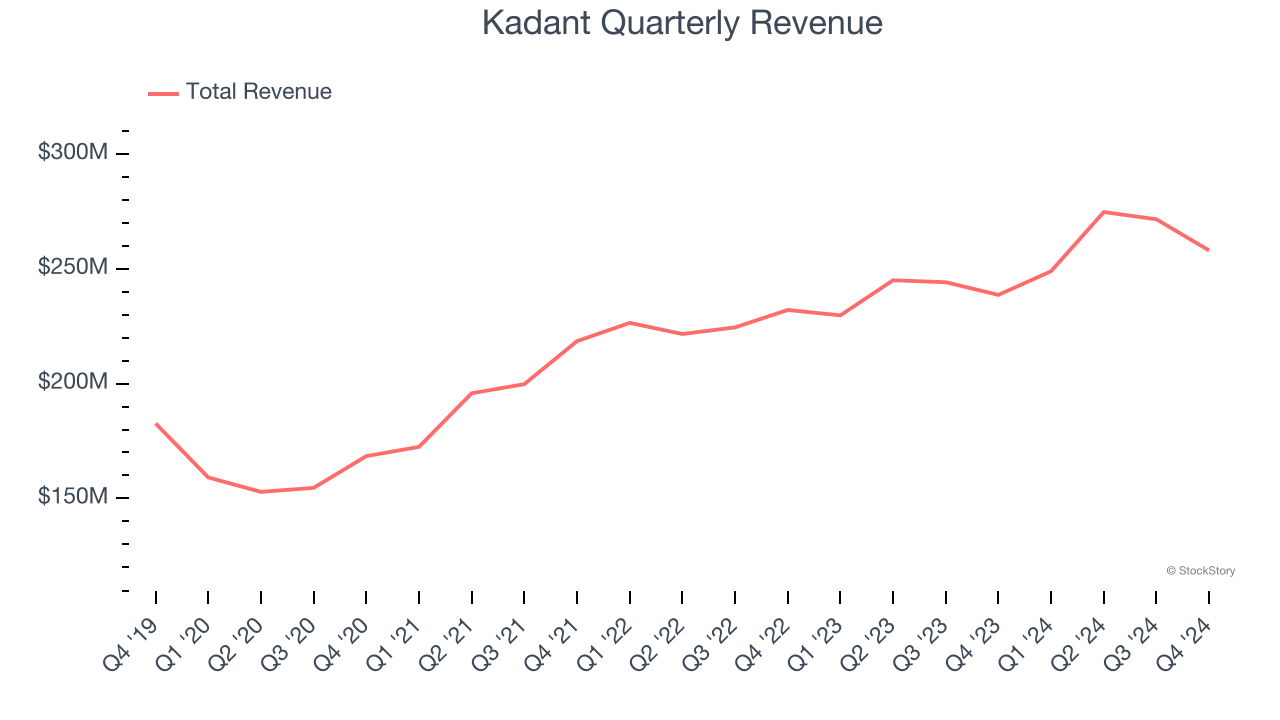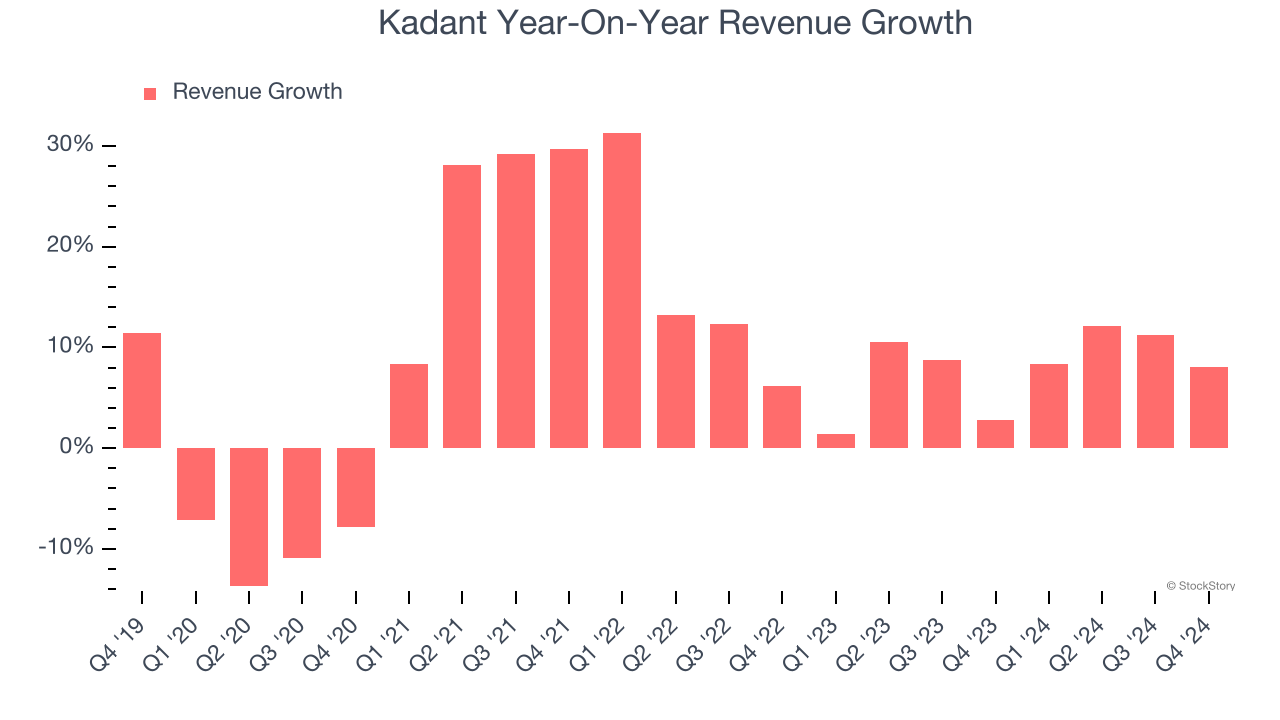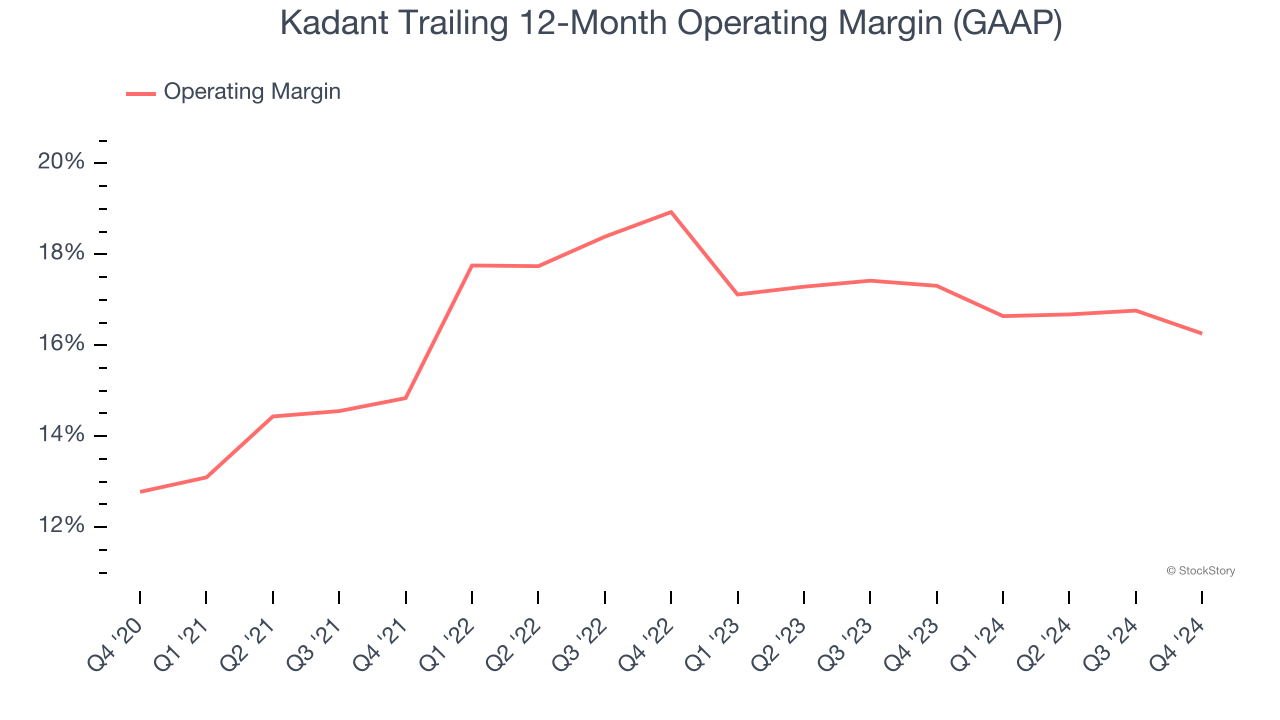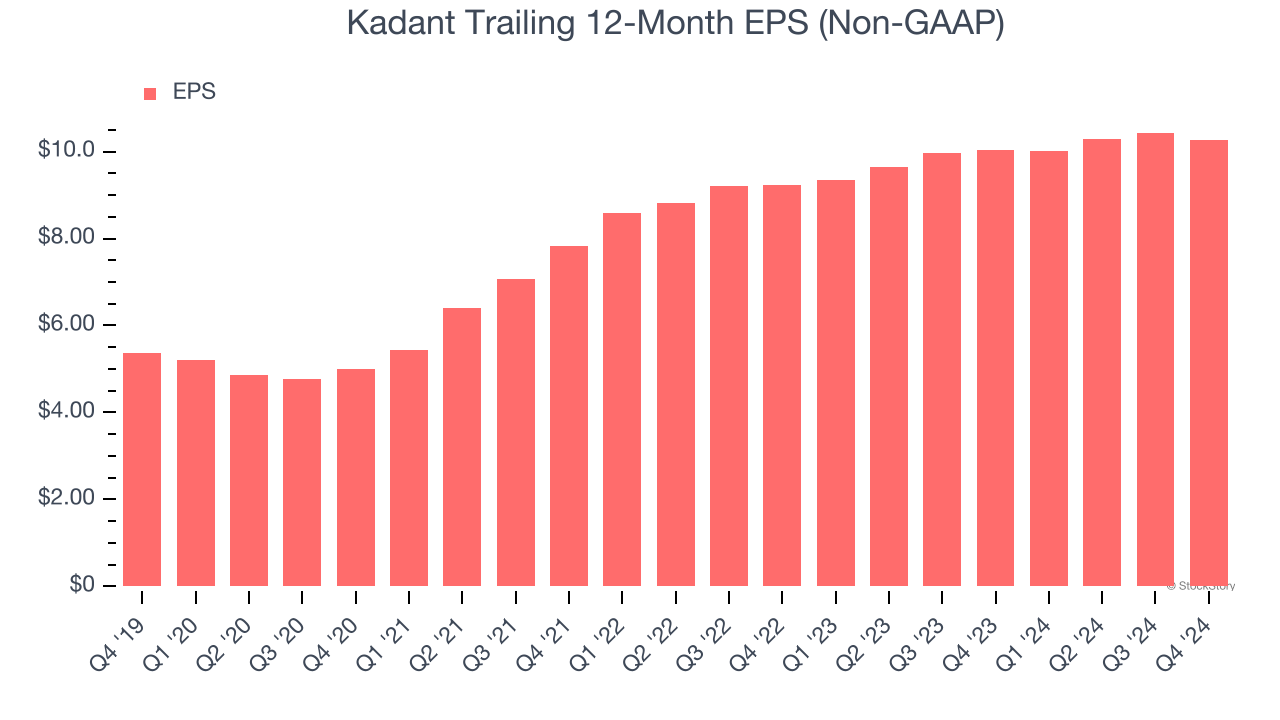
Industrial equipment manufacturer Kadant (NYSE: KAI) met Wall Street’s revenue expectations in Q4 CY2024, with sales up 8.1% year on year to $258 million. On the other hand, next quarter’s revenue guidance of $238.5 million was less impressive, coming in 7.5% below analysts’ estimates. Its non-GAAP profit of $2.25 per share was 9.8% above analysts’ consensus estimates.
Is now the time to buy Kadant? Find out by accessing our full research report, it’s free.
Kadant (KAI) Q4 CY2024 Highlights:
- Revenue: $258 million vs analyst estimates of $257.8 million (8.1% year-on-year growth, in line)
- Adjusted EPS: $2.25 vs analyst estimates of $2.05 (9.8% beat)
- Adjusted EBITDA: $52.45 million vs analyst estimates of $50.63 million (20.3% margin, 3.6% beat)
- Management’s revenue guidance for the upcoming financial year 2025 is $1.05 billion at the midpoint, missing analyst estimates by 3.3% and implying -0.1% growth (vs 10% in FY2024)
- Adjusted EPS guidance for the upcoming financial year 2025 is $9.88 at the midpoint, missing analyst estimates by 6.3%
- Operating Margin: 14.3%, down from 16.3% in the same quarter last year
- Free Cash Flow Margin: 17.9%, down from 20.7% in the same quarter last year
- Market Capitalization: $4.28 billion
Management Commentary“The fourth quarter was a good finish to a record-setting year,” said Jeffrey L. Powell, president and chief executive officer of Kadant Inc.
Company Overview
Headquartered in Massachusetts, Kadant (NYSE: KAI) is a global supplier of high-value, critical components and engineered systems used in process industries worldwide.
General Industrial Machinery
Automation that increases efficiency and connected equipment that collects analyzable data have been trending, creating new demand for general industrial machinery companies. Those who innovate and create digitized solutions can spur sales and speed up replacement cycles, but all general industrial machinery companies are still at the whim of economic cycles. Consumer spending and interest rates, for example, can greatly impact the industrial production that drives demand for these companies’ offerings.
Sales Growth
A company’s long-term sales performance can indicate its overall quality. Any business can put up a good quarter or two, but many enduring ones grow for years. Thankfully, Kadant’s 8.4% annualized revenue growth over the last five years was decent. Its growth was slightly above the average industrials company and shows its offerings resonate with customers.

Long-term growth is the most important, but within industrials, a half-decade historical view may miss new industry trends or demand cycles. Kadant’s annualized revenue growth of 7.9% over the last two years aligns with its five-year trend, suggesting its demand was stable. 
We can dig further into the company’s revenue dynamics by analyzing its three most important segments: Fluid Handling, Industrial Processing, and Material Handling, which are 36.7%, 39.3%, and 24% of revenue. Over the last two years, Kadant’s revenues in all three segments increased. Its Fluid Handling revenue (piping, cleaning, and filtration) averaged year-on-year growth of 3.2% while its Industrial Processing (paper and timber processing equipment) and Material Handling (wood production equipment) revenues averaged 11.3% and 11.5%.
This quarter, Kadant grew its revenue by 8.1% year on year, and its $258 million of revenue was in line with Wall Street’s estimates. Company management is currently guiding for a 4.2% year-on-year decline in sales next quarter.
Looking further ahead, sell-side analysts expect revenue to grow 3.5% over the next 12 months, a deceleration versus the last two years. This projection doesn't excite us and implies its products and services will face some demand challenges.
Software is eating the world and there is virtually no industry left that has been untouched by it. That drives increasing demand for tools helping software developers do their jobs, whether it be monitoring critical cloud infrastructure, integrating audio and video functionality, or ensuring smooth content streaming. Click here to access a free report on our 3 favorite stocks to play this generational megatrend.
Operating Margin
Kadant has been a well-oiled machine over the last five years. It demonstrated elite profitability for an industrials business, boasting an average operating margin of 16.3%. This result isn’t surprising as its high gross margin gives it a favorable starting point.
Analyzing the trend in its profitability, Kadant’s operating margin rose by 3.5 percentage points over the last five years, as its sales growth gave it operating leverage.

This quarter, Kadant generated an operating profit margin of 14.3%, down 2 percentage points year on year. Since Kadant’s operating margin decreased more than its gross margin, we can assume it was recently less efficient because expenses such as marketing, R&D, and administrative overhead increased.
Earnings Per Share
We track the long-term change in earnings per share (EPS) for the same reason as long-term revenue growth. Compared to revenue, however, EPS highlights whether a company’s growth is profitable.
Kadant’s EPS grew at a remarkable 13.9% compounded annual growth rate over the last five years, higher than its 8.4% annualized revenue growth. This tells us the company became more profitable on a per-share basis as it expanded.

We can take a deeper look into Kadant’s earnings to better understand the drivers of its performance. As we mentioned earlier, Kadant’s operating margin declined this quarter but expanded by 3.5 percentage points over the last five years. This was the most relevant factor (aside from the revenue impact) behind its higher earnings; taxes and interest expenses can also affect EPS but don’t tell us as much about a company’s fundamentals.
Like with revenue, we analyze EPS over a more recent period because it can provide insight into an emerging theme or development for the business.
For Kadant, its two-year annual EPS growth of 5.5% was lower than its five-year trend. We hope its growth can accelerate in the future.
In Q4, Kadant reported EPS at $2.25, down from $2.41 in the same quarter last year. Despite falling year on year, this print beat analysts’ estimates by 9.8%. Over the next 12 months, Wall Street expects Kadant’s full-year EPS of $10.28 to grow 7%.
Key Takeaways from Kadant’s Q4 Results
It was encouraging to see Kadant beat analysts’ EBITDA expectations this quarter. We were also happy its EPS outperformed Wall Street’s estimates. On the other hand, its full-year revenue guidance missed significantly and its full-year EPS guidance fell short of Wall Street’s estimates. Overall, this quarter could have been better. The stock remained flat at $357 immediately after reporting.
So should you invest in Kadant right now? When making that decision, it’s important to consider its valuation, business qualities, as well as what has happened in the latest quarter. We cover that in our actionable full research report which you can read here, it’s free.






